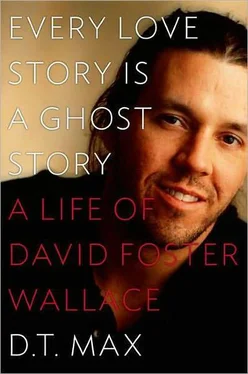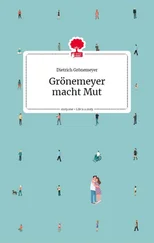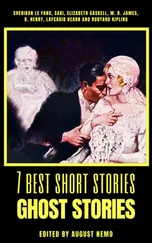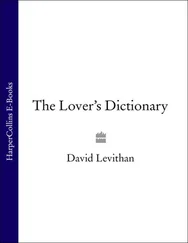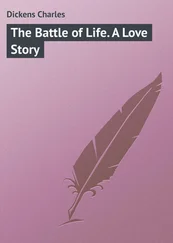But Wallace was content. He had a young woman near but not too near and a place to write. His apartment consisted of two rooms and a kitchen and, as when he lived with Costello sophomore year, a view of a Dumpster. “It’s a good dumpster,” he reported to his friends. “It’s painted white. It’s about as large as a small truck. It gives off a fairly powerful odor when the wind is from the north.” 2He set himself up, Smith-Corona on the desk, towels spread out everywhere. Outside was a pool and lots of palm trees. “Their trunks,” he told his friends, “tend to be kind of meaty. And their fronds — they’re not called leaves; if you call them leaves people cock their eyebrows at you — the fronds tend to occupy angles that are sort of Lovecraftian. They don’t quite match up to any known laws.” The black widow spiders everywhere in Tucson excited his imagination too. “You use a propane torch to fry them in their webs and hope their grieving mates don’t fall on your head from the palm trees above,” he claimed. 3
What made the room best of all was that he was soon writing in it. He could work hours without breaks, smoking heavily — he began the habit senior year of college — writing longhand on sheets of yellow paper or in notebooks. The notebooks also functioned, as he wrote in a story from that period, for “trapping little inspirations before they could get away.” He found that he could write not just in his little apartment but anywhere — in the smoking room of the library, on a bench, in a café. And he did not need fiction workshops or input from teachers to get him going; he was just exploding with words. One story he focused on was “Forever Overhead,” the tale of a thirteen-year-old boy who stands atop a high-dive board on his birthday and contemplates his imminent leap into maturity. The boy wants both to turn back and to get in the pool. Frozen atop the tower, he certainly experiences anxieties familiar to Wallace. “You have decided being scared is caused mostly by thinking,” the narrator notes. Wallace uses the boy’s moment of doubt to encapsulate the ambivalence he felt about his own passage from childhood to his teen years (or perhaps the perils of writing). In the end the boy will dive, as he must. “The board will nod and you will go,” the narrator intones, “and eyes of skin can cross blind into a cloud-botched sky that is forever, punctured light emptying behind sharp skin that is forever. Step into the skin and disappear.” The story was not typical of the writing Wallace was becoming interested in — it would soon seem to him sentimental and overblown — but in his early days in Arizona he was happy with how easily everything came to him. 4
School began soon after he arrived. Among the seven thousand graduate enrollees at the University of Arizona, the students in the writing program were a miniscule contingent, comparable to Wallace’s small band of friends at Amherst. They rented houses together, ate together, drank together, dated each other, and read and commented on one another’s stories. The symbolic hub of their world was a pretty adobe building called the Poetry Center, but most of the work was done in the ugly, newish Modern Languages Building. The program was run by Carter, a novelist of uncertain age. 5She had been famous for standing at her office desk, writing and smoking, but by the time Wallace arrived she had given up smoking — and so stopped writing. Competitiveness and not a little jealousy laced the air of the program, though Wallace at first either did not notice or did not care. “I love it here, Corey,” he wrote his friend Washington shortly after arriving. “The place, the weather, the school, the girls, the students in the program, the girls, the professors, etc. I will be here for the next three years at least.”
Most MFA students looked on writing as a calling unto itself. They took a few literature classes to satisfy the requirement for their degree. But Wallace was still interested in the ideas behind fiction, so he signed up his first semester for a class on the history of the English language, which prompted an attempt to write a story in Old English, and another class on literary theory that focused on Derrida’s Of Grammatology . The course was a cinch for Wallace, who was familiar with much of the reading list from Amherst, if not from before. He wrote his old theory professor and friend Andrew Parker about how much he enjoyed grappling with difficult texts again and asked his Arizona literary theory professor if he should reread Hans-Georg Gadamer’s Truth and Method , a book that criticized attempts to turn the study of literature into a science. The professor assured him once was enough. He wasn’t sure if the question had been serious or not or a bit of both. All he knew for sure was that Wallace was far and away his best student.
The fiction survey was taught by a visiting professor, Richard Elman, a veteran novelist, essayist and teacher. One time he invited students in his class to read their stories and then fell asleep in his chair, snoring loudly. But he was intelligent, well-read, and closer than anyone else Wallace knew to New York and publishers, so of interest to the ambitious young Wallace. They would gossip, play tennis, and in his class Wallace read for the first time Gilbert Sorrentino, whose precise, almost analytic evocations of childhood in Aberration of Starlight felt like something he might like to try.
Wallace was not a tentative freshman anymore. He had matured, if not emotionally, then at least socially, and graduate programs, familiar to him from his childhood, were easier for him to navigate than undergraduate life at a preppy school. He knew where the levers of academic control were and how to work them. But he still he had no gift when it came to human interactions. His default mode was to show off in a way that struck others as less than nice. “How well do you know Pynchon’s work?” he would ask when he met a fellow student. “Excuse me,” he said, overhearing a fellow student say “nauseous” when she meant “nauseated.” “My mother’s an English teacher and I have to tell you the way you’re using that word is wrong.” (He would tell an interviewer in 1999 about this time, “I was a prick.”)
Yet his cockiness was always muted by politeness and even graciousness. All teachers were “Professor”; anyone even slightly older than he was “Mr.” or “Ms.” His decorousness bordered at times on parody. “What I came to believe over time,” remembers the novelist Robert Boswell, who was teaching as an adjunct in the program when Wallace arrived, “was that it was both affected and genuine in some way.” And Wallace was gentler on paper, where he was more secure, than verbally. In workshops his written comments on his fellow students’ papers were as generous as his spoken comments could be spiky. He had a way of seeing the promise in stories. “Don’t get me wrong: I like this,” he wrote on the last page of one fellow student’s story, “too much to have you put it away as ‘perfect.’” He drew a large happy face below his signature, a huge pair of eyes, a long descending line for the nose. With his friends, he would often tell them to ignore the negative comments by their teachers and go with what they thought was right.
Wallace made most of his friendships with other students from the Midwest. They tended to be simpler to read and embodied the culture of forthrightness he’d grown up with. In Elman’s class, he grew close to Heather Aronson, who was from Iowa, and Forrest Ashby, from St. Louis. Wallace tried to make friends with them in his usual way by asking how they could call themselves fiction writers without having read Derrida, but they got past this. Ashby, who was athletic, played tennis with Wallace and was astounded by his skills. One day when Aronson was frightened by black widows in her house, Wallace came to the rescue with goggles and a blowtorch. When they all got together, the other two loved Wallace’s talk and were saddened by his story about the suicide of a friend in college that had led to his taking a year off.
Читать дальше
